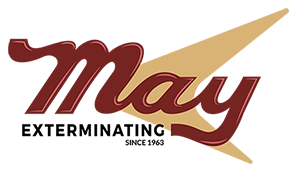There are 45 species of termites that are all placed in 3 common categories. We take a look at these three categories of termites and see which ones are most common and damaging in our area.
Subterranean Termites
These termites nest in the soil and are the most destructive types of termites. They create enormous nests that are larger than any other insect. The use mud tubes to create tunnels directly to food sources. They are found in all the states in the US aside from Alaska. Two species types found here in North Carolina include Formosan and Dark Southeastern Subterranean.
- Formosan
This species of subterranean termites have qualities that make them troublesome to North Carolina homeowners. They enter homes from the soil through cracks. They can then create a nest in your home so they do not have to return to the soil. And when they feel threatened, they spray an unpleasant white liquid as a defense.
- Dark Southeastern Subterranean
These dark brown or black-bodied termites stay busy constructing mud tubes, branching out to reach their latest food source. Their favorite food of choice is pine, Douglas fir and plywood. All common building materials in the southeast. If you spot wood with a hollow sections that resemble a honeycomb pattern, this is a sign of termites. Watch for mud tubes, piles of mud or partial broken-down wood.
Drywood
Drywood termites live in trees and lumber. They have smaller colonies and do not need the soil to live. Drywood termites are slower at creating extensive damage than their subterranean relatives, but they still can wreak havok if unchecked. They dig out their nests and live directly in the wood itself. Vulnerable drywood such as siding or eaves are an ideal breeding ground for drywood termites. Various subtypes of drywood termites include western, southeastern, and desert groups.
Dampwood
Dampwood termites live in high-moisture or wet wood. It’s rare to find them in occupied housing structures. There is an insufficient amount of moisture in most homes to support these termites needs. Some common subspecies of dampwood termites include: Desert, Florida, Nevada, and Pacific classes.
Professional Termite Control
Even if you haven’t noticed any signs of termite activity around you home, it’s very important to protect your investment with an annual termite inspection and plan. If you’ve noticed one or two potential signs of termites in your home, it’s critical that you act quickly to have your home inspected and treated to stop damage to your home and it’s value.
If you suspect termites in your home, or want to ensure you have a plan that covers your home, contact May Exterminating Services to schedule your free termite inspection. Enjoy peace of mind knowing your family home is protected by professional termite control services.
.Call 910-455-5888 to schedule your free estimate or submit your request online.


Recent Comments